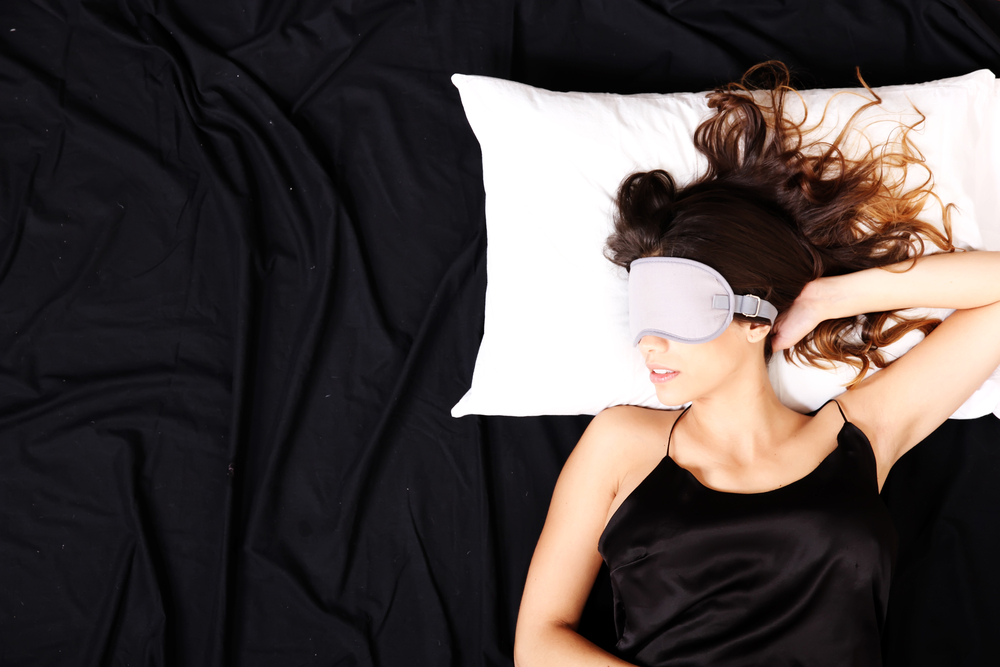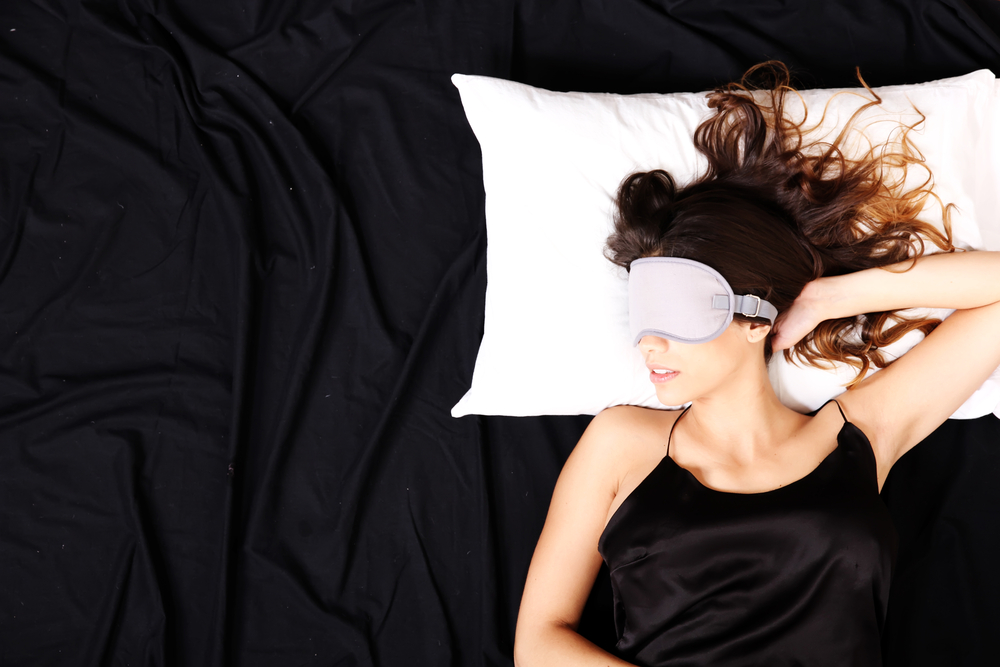
6 Little Habits That Are Making You Unhealthy (And How To Fix Them)
Almost everybody breathes a very minimal amount of air with each breath. Even if you were to take a deep breath, chances are good that you're not doing it the right way.
By Bill Domke

Instincts, shminstincts. Our bodies don’t know how to cope with our bad habits anymore. This year, instead of focusing on lofty goals and vague resolutions that you’re setting for the fifth year running, why not aim to work on a few little things you’re not even aware of doing?
1. Terrible Posture
Bad posture is all around you. If you are reading this on a subway train, look around. Look at the way people’s shoulders are either rolled forward or shrugged up from the cold. See heads that are looking down to the ground, and the slouch in everyone’s lower back as they sit. These are terrible habits that are the real reasons why we develop the posture that we associate with the elderly.
Some long-term effects of bad posture: Shoulders that are rolled forward mean that your back muscles are stretched out too much for very long periods of time, gradually weakening upper-back strength. The trend only gets worse as you age, and eventually your bad posture will be one of the predominant reasons why you are at such high risk of falling and hurting yourself in other ways. Your shrugged shoulders are also a high reason for muscle contusions in the neck (particularly your trapezius muscles) which have been linked to increased headache and anxiety. Sitting in 90 degree chairs is bad in general, but the universal slouch that most people adopt becomes a major point in the weakening of the lower back as you age.
How can you fix it? Fixing bad posture is difficult because it involves developing a constant awareness of your body. In the winter, pay attention to your shoulders. Try to relax them downwards and backwards. It will almost seem like you’re puffing out your chest. The “keep your chin up” phrase you may or may not hear from your relatives is also very good advice, as it helps relax some of the muscles in your neck. Try to sit as upright as possible, actually engaging the muscles in the abdomen and lower back. The best posture advice I’ve ever gotten was imagine a string is attached to the top of your head, and let it pull you upright, almost off the ground. Maintain this stance whenever you stand.
2. Ignoring The Need For Orthotics
This is especially alarming if you’re a runner of any kind. People seldom have proper footing within their shoes. We are all unique, and the problem is that our shoe retailers are mass-producing shoes that are not designed to cater to such diversity. Your feet will take you immense distances, but while they travel in shoes with little to no support, the muscles that support your arches will weaken. Google some pictures of people with healthy arches. Look at how their ankles and knees sit on top. Now look for people with flat feet.
Some long-term effects of bad footing: Do you see how unnaturally the ankles and knees rest on top of feet with no actual support? The little stress that this causes on your joints compounds immensely over time. If you run several miles a day, the effects become apparent even sooner than old age. Numerous ankle, knee, hip, and back pains await you as you ignore the problem. Everything about your posture extends from how your body first meets the ground: through your feet.
How can you fix it? If you’re very serious about addressing your footing, have a specialist map out the pressure spots for your footing. They can give you an insole designed for the contour of your feet. This is not a painless process, however, and you will be uncomfortable as your foot adjusts. It is also fairly expensive. A good pair of orthotics can run you $200. Think of it like getting braces: you’ll be better off in the long run.
3. Incorrect Sleeping
Yes, you’re probably sleeping wrong. This isn’t the scariest of problems, but some very simple body aches and sores can be traced back to how your body rests for the 4-12 hours that you lay in bed. There are four basic ways to sleep: supine (on your back), prone (on your stomach), and on your left and right sides. Sleeping in a supine position is usually considered most healthy. If you are on your stomach, you’re likely twisting your head to one side, because it’s hard to breathe through pillows, and you can imagine the neck pain that gives rise to. The two side positions also usually require extra support.
Some long-term effects of unsupported sleeping: Mostly minute posture problems that combine with other maladies that will give you some sort of pain. I don’t know too many people that pay attention to sleeping posture, and in general, most scientists still don’t know what sleep even does for us, so this one isn’t cut and dry. The spinal support case is very real, however, and it doesn’t hurt to be cautious.
How can you fix it? If you’re a back sleeper, it helps to put a pillow or some type of support on the back of your knees and neck. This supports the spine’s natural curvature which undergoes a little stress from laying down. If you sleep on either side, place a pillow between the knees, as this also helps support the spine and back to keep them straight. If you can help it, don’t sleep on your stomach. It is the most difficult position to breathe from, and probably will give you a stiff neck.
4. Shallow Breathing
Singers and brass and woodwind musicians know this problem all too well. Almost everybody breathes a very minimal amount of air with each breath. Even if you were to take a deep breath, chances are good that you’re not doing it the right way. Your diaphragm is the muscle that works with the lungs for deep breathing and hard exhalation. It’s located below your lungs, and along with some other structures separates the two main cavities in your upper body.
The correct way to refer to how much oxygen you take in without extra effort is known as “tidal volume.” Professional musicians, athletes, and coaches will advocate for breathing with your stomach, which sounds strange but is the method that actually makes use of your diaphragm and fills up most of your “tidal capacity.” The alternative, where the chest and shoulders expand, only fills the upper half of your lungs. The idea is that you sport a higher tidal volume when breathing while making use of your diaphragm.
Some long term effects of shallow breathing: It’s a bad habit that becomes problematic, again, as you age. However, people that breathe deeper have been correlated to lower blood pressure, and better overall performance. More oxygen in the lungs means more for the blood, which means a better supply for the body and brain.
How can you fix it? Changing how you breathe is a gradual process that many don’t ever master. It’s still possible because we’re born breathing this way, we just tend to stray from the right technique. First, try to breathe deeply, but instead of expanding your upper body, let your stomach expand. The less your shoulders jump up, the better. The rest is still debated. Many encourage focused breathing exercises for minutes at a time with conscious monitoring whenever you can. Eventually, it is possible to fully adapt to this style so that you unconsciously do so, even in your sleep.
5. Not Stretching Or Getting Massages
Stretching and massage are two separate points that can also go hand in hand. Stretching provides tremendous benefits and promotes muscle strength and resiliency. Massage is there for when you have inconsistencies in the muscle (and for general relaxation). You can have the ability to shrug 315 lbs for 20 reps but still have terrible contusions in your neck—many avid gym-goers have no idea the benefits they could do for their muscular system by getting either a full-body or area-focused massage session. The lack of these two is likely the reason for random muscle soreness that takes longer than usual to go away. There are professions devoted to stretching and massage and still many completely disregard them.
Some long term effects of not stretching or getting massages: Your range of motion becomes limited. For example, even if you think your gluteal muscles are completely healthy, you can likely squat an extra three inches after a massage. Without stretching, muscle durability will decrease, and you experience longer recovery times after workouts. It also helps get rid of the lactic acid buildup that results from a strenuous workout, so you will have to soreness for longer periods of time.
How can you fix it? Getting a massage is not difficult to figure out, but you should make sure your choice is a licensed massage therapist. Make sure you communicate with them during the first session because everyone has different sensitivities and it is not up to them to know your tolerance to different approaches. You should stretch target muscle groups before and after exercise, but definitely focus on the after. Take deep breaths before the stretch and slowly exhale as you pull on the muscle fiber. Avoid fast, jerking motions. It helps to have a small anatomic reference of the muscles you are stretching so you can stretch along the fiber, and not against them.
6. Listening To Loud Music
Your ears aren’t meant to listen to music at the highest volume settings, just as your headphones usually aren’t meant to play that loud. Both will eventually blow out. Look at any professional musicians, whose ears become vital to their careers, at a concert. Many wear earplugs, whether they’re playing the show, or are just spectators. Our ears didn’t evolve to continuously process loud sounds. The subwoofers and jet engines are a product of our own engineering, not nature, so the three tiny bones that allow you to hear are easily overwhelmed.
Some long term effects of listening to loud music: You lose the ability to listen to loud music. You naturally lose hearing in general, and loud noises will expedite the process. Tinnitus is also a very undesirable result, where you can will actually hear things that have no real origin. The noises can be soft or loud and frequent enough to be considered painful.
How can you fix it? Keep an eye on where your volume level is. Invest in a pair of ear plugs for concerts. You can always take them out for quieter songs. You can also test your hearing with a professional to see if you’re losing sensitivity. ![]()











